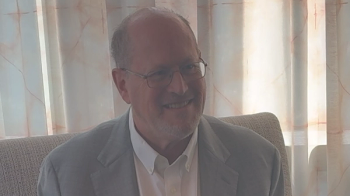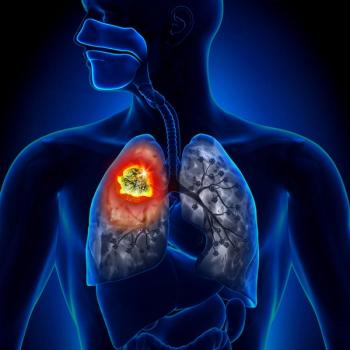
- ONCOLOGY Vol 16 No 2
- Volume 16
- Issue 2
Cancer Vaccines and Immunotherapy
For the past 20 to 30 years, enormous resources have been directed toward the development of effective cancer immunotherapies. The interest in immunotherapeutic approaches comes from the potential specificity imparted by the recognition of tumor-specific antigens combined with the powerful cytolytic properties of cellular and humoral immune effector arms. Earlier attempts to induce and/or expand tumor antigen-specific immune responses in patients involved the systemic administration of cytokines such as interleukin-2 (Proleukin), or immunization with vaccines prepared from whole tumor cells or tumor cell lysates admixed with powerful immunologic adjuvants (stimulators). Unfortunately, only limited efficacy was achieved.
For the past 20 to 30 years, enormous resources havebeen directed toward the development of effective cancer immunotherapies. Theinterest in immunotherapeutic approaches comes from the potential specificityimparted by the recognition of tumor-specific antigens combined with thepowerful cytolytic properties of cellular and humoral immune effector arms.Earlier attempts to induce and/or expand tumor antigen-specific immuneresponses in patients involved the systemic administration of cytokines such asinterleukin-2 (Proleukin), or immunization with vaccines prepared from wholetumor cells or tumor cell lysates admixed with powerful immunologic adjuvants(stimulators). Unfortunately, only limited efficacy was achieved.
Over the past 15 years, several developments stimulated further interest andgrowth in the introduction of cancer vaccines to the clinic. They include therapid progress in understanding the basic features of antigen presentation andimmune recognition, thus providing a means for more effective immunization;progress in molecular biology that permitted the identification of numerouspotential tumor-specific or tumor-associated antigens; the increasedavailability of recombinant cytokines, proteins, peptides, and other componentsnecessary to generate a vaccine product; and the relative ease with whichforeign genes such as cytokines or tumor antigens could be expressed in virusesand cells.
Despite substantial efforts in the field and progress in basic understanding,critical aspects of the biology and immunology related to optimal induction ofantitumor immune responses, and even the basic parameters of an effectiveantitumor immune response, remain unknown. No clear best approach to inducingantitumor immune responses has emerged. For these reasons, many different cancervaccines involving many different potential antigens and antigen presentationapproaches are currently in clinical development.
The editors of Cancer Vaccines and Immunotherapy have assembled a collectionof concise, well-written chapters by several leading figures in the field thathighlight many of the major areas of research and the important developmentissues for cancer vaccines. The initial chapter provides a useful overview ofthe basic features of antigen presentation, immune recognition of antigen,immune effector arms, the interaction of the host immune system with the tumorduring tumor growth, types of tumor antigens, the rationale for the selection ofcertain tumor antigens and antigen-presentation approaches, and the mechanismsof tumor escape. The chapters that follow address specific immunizationapproaches (eg, poxviruses, anti-idiotypes, and dendritic cells), vaccineapproaches for specific diseases (B-cell tumors, colon cancer, cervical cancer,Epstein-Barr virus-related cancers), and tumor antigen discovery (SEREX[screening of cDNA expression libraries derived from human tumors withautologous antibody] and CTL [cytotoxic T lymphocyte] epitopes).
The chapters generally contain a generous number of helpful illustrations andtables, and are organized to include an introductory section (with basicinformation on the relevant disease or the basic biology supporting theapproach) and conclusions (which encompass future directions). In the final twochapters, the editors provide a useful overview of the major issues introducedand some discussion to relate these issues to current findings and prospectivepossibilities.
Because the chapters are concise yet cover a broad range of diverse topics,the book will be most useful to oncologists and immunologists who have limitedfamiliarity with cancer vaccines and would like greater knowledge of currentissues and developments in the field. The book may also be useful for thoseseeking more in-depth knowledge of a selected topic, such as poxvirus vectors orvaccine approaches in cervical cancer.
However, because of its organization and selected coverage of topics, thebook is not comprehensive and should not be considered a sole source ofinformation on cancer vaccines. For example, the coverage of melanoma vaccineswhichrepresents a significant portion of the work in the fieldis somewhat limited.Most of the book is devoted to defined-antigen vaccines, with less attentionpaid to whole tumor cell vaccines, tumor cell lysates, or tumor cell componentssuch as heat-shock proteins, and gene-modified tumor cells. Paradoxically, onechapter is devoted to intravesical bacillus Calmette-Guérin (BCG) instillationfor bladder cancer, which is arguably not a cancer vaccine but more of anonspecific immunotherapy.
Readers seeking dedicated chapters on issues related to clinical trial designand the monitoring of vaccine immune responses will need to turn to othersources. Several other topics such as adenovirus-based vaccines or approaches toblocking negative costimulation (eg, with anti-CTLA4) are either not covered orgiven only passing mention.
Nevertheless, although Cancer Vaccines and Immunotherapy should not beconsidered a sole resource for readers who are interested in cancer vaccines, itis certainly a useful and easily accessible book that can be used as an initialintroduction to the field, as a resource for information on selected topics inthe area, or as an adjunct to more comprehensive sources.
Articles in this issue
almost 24 years ago
Surgeon General Links Obesity to Canceralmost 24 years ago
Medicare Delays New Outpatient Payment Systemalmost 24 years ago
New Report on Nation’s Progress Against Cancer Releasedalmost 24 years ago
Atlas of Breast Cancer, Second Editionalmost 24 years ago
Subcutaneous Amifostine May Be as Effective as Intravenous Administrationalmost 24 years ago
Newly Designated NCI Director Roundly Applauded by Cancer Communityalmost 24 years ago
Stress Accelerates AIDS Progression, Undermines the Effect of Therapyalmost 24 years ago
Association of Community Cancer Centers Launches New Public Policy Websitealmost 24 years ago
Radioimmunotherapy Improves Response in Chemotherapy-Refractory NHLNewsletter
Stay up to date on recent advances in the multidisciplinary approach to cancer.



















































































